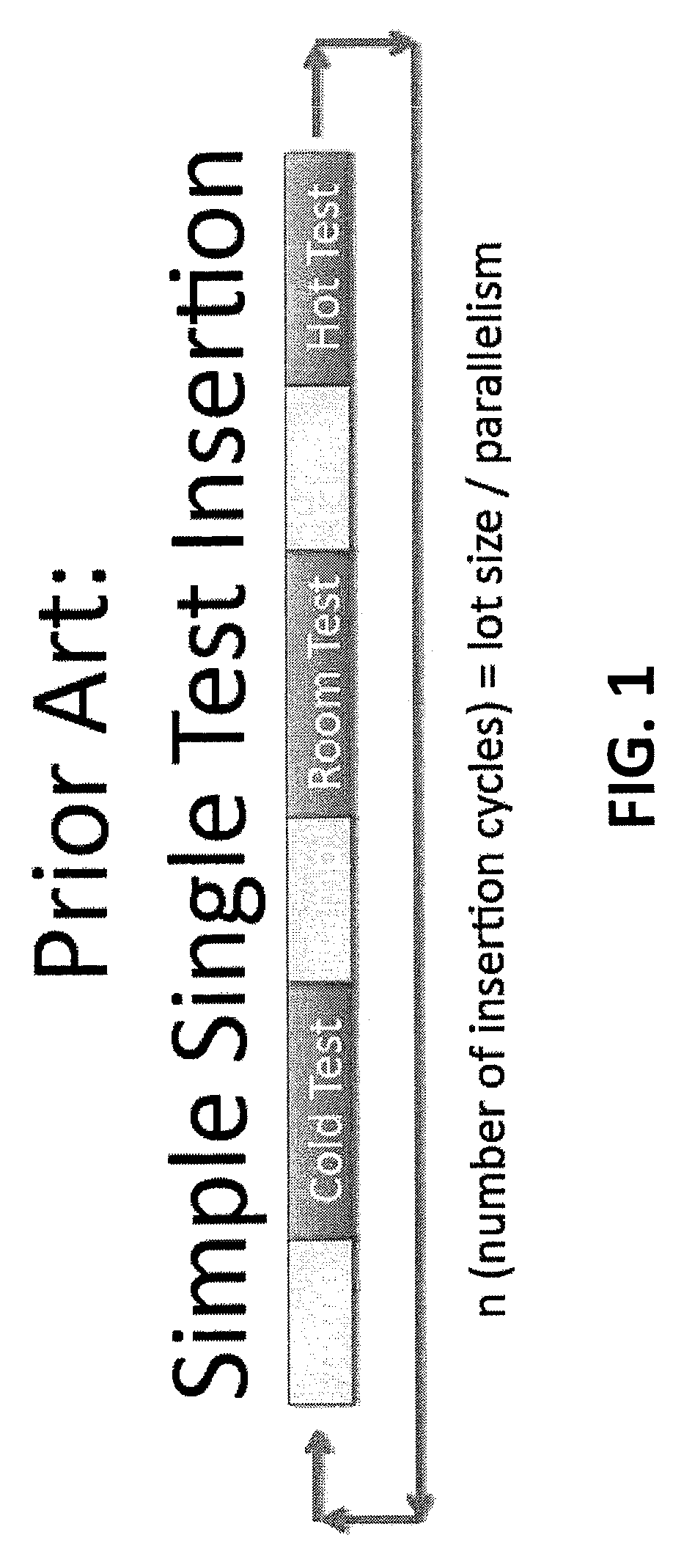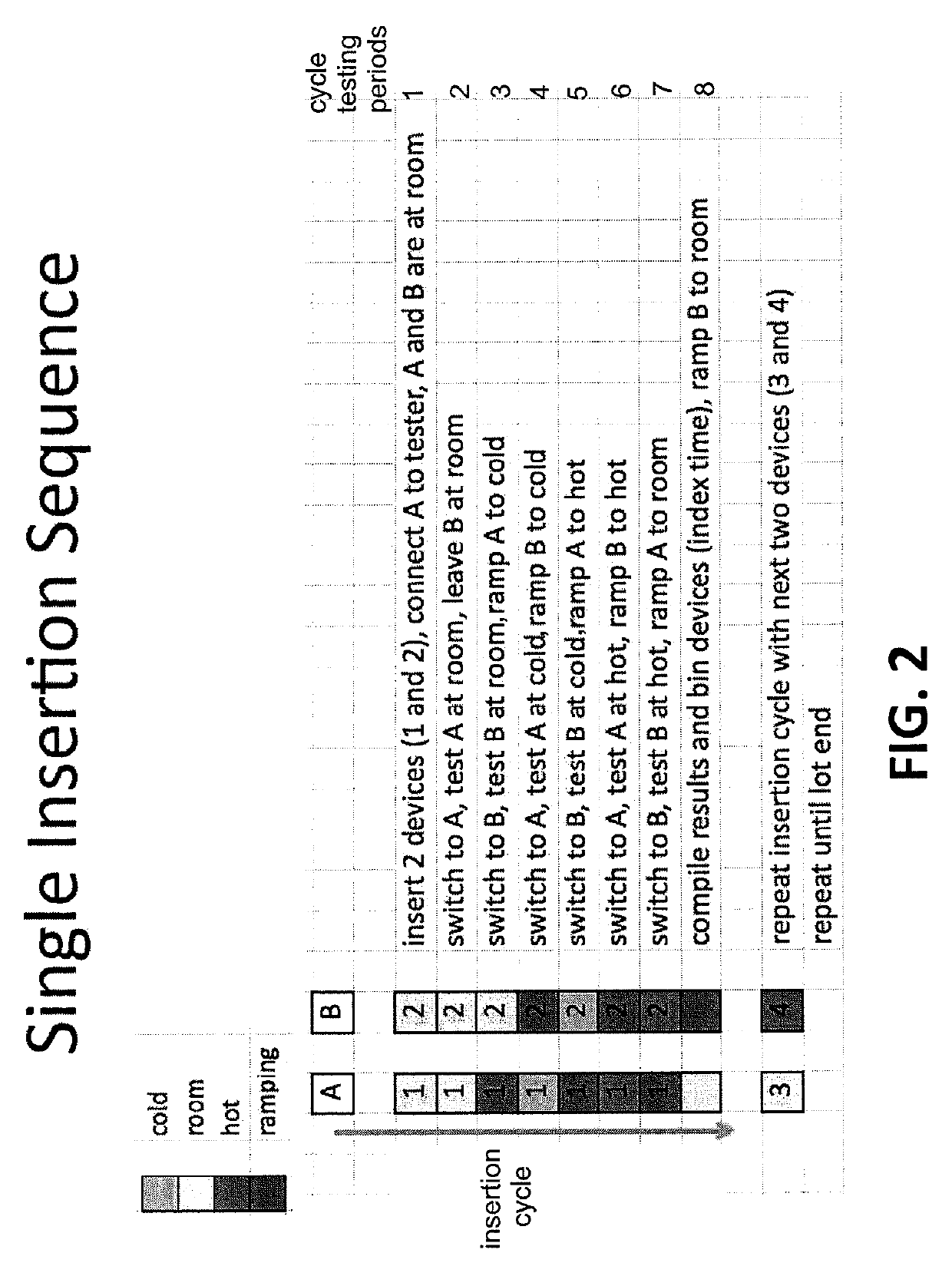Method for continuous tester operation during multiple stage temperature testing
a test operation and temperature testing technology, applied in the field of automatic manufacturing systems and methods, can solve the problems of inability to control, test operations can also require significant amounts of time, effort and expense, and test operations can be difficult to achieve controllable, and achieve the effect of minimizing cumulative index time or achieving operational effectiveness and efficiency
- Summary
- Abstract
- Description
- Claims
- Application Information
AI Technical Summary
Benefits of technology
Problems solved by technology
Method used
Image
Examples
Embodiment Construction
[0042]In view of the foregoing, the present disclosure, through one or more of its various aspects, embodiments and / or specific features or sub-components, is thus intended to bring out one or more of the advantages as specifically noted below. The present disclosure provides a description of a method for performing continuous semiconductor tester operation using multiple temperatures during a single semiconductor test, which is characterized by substantially reducing index time, and in some operational configurations, entirely eliminating index time.
[0043]For instance, this type of a testing protocol eliminates semiconductor lot processing and staging between temperature tests, thereby reducing the overall time to fully test product devices. This protocol also reduces robotic handling, thereby reducing the potential for electrostatic discharge damage (ESD) and mechanical damage to the semiconductor device. Semiconductor device insertions into testing sockets are reduced, thereby in...
PUM
 Login to View More
Login to View More Abstract
Description
Claims
Application Information
 Login to View More
Login to View More - R&D Engineer
- R&D Manager
- IP Professional
- Industry Leading Data Capabilities
- Powerful AI technology
- Patent DNA Extraction
Browse by: Latest US Patents, China's latest patents, Technical Efficacy Thesaurus, Application Domain, Technology Topic, Popular Technical Reports.
© 2024 PatSnap. All rights reserved.Legal|Privacy policy|Modern Slavery Act Transparency Statement|Sitemap|About US| Contact US: help@patsnap.com










